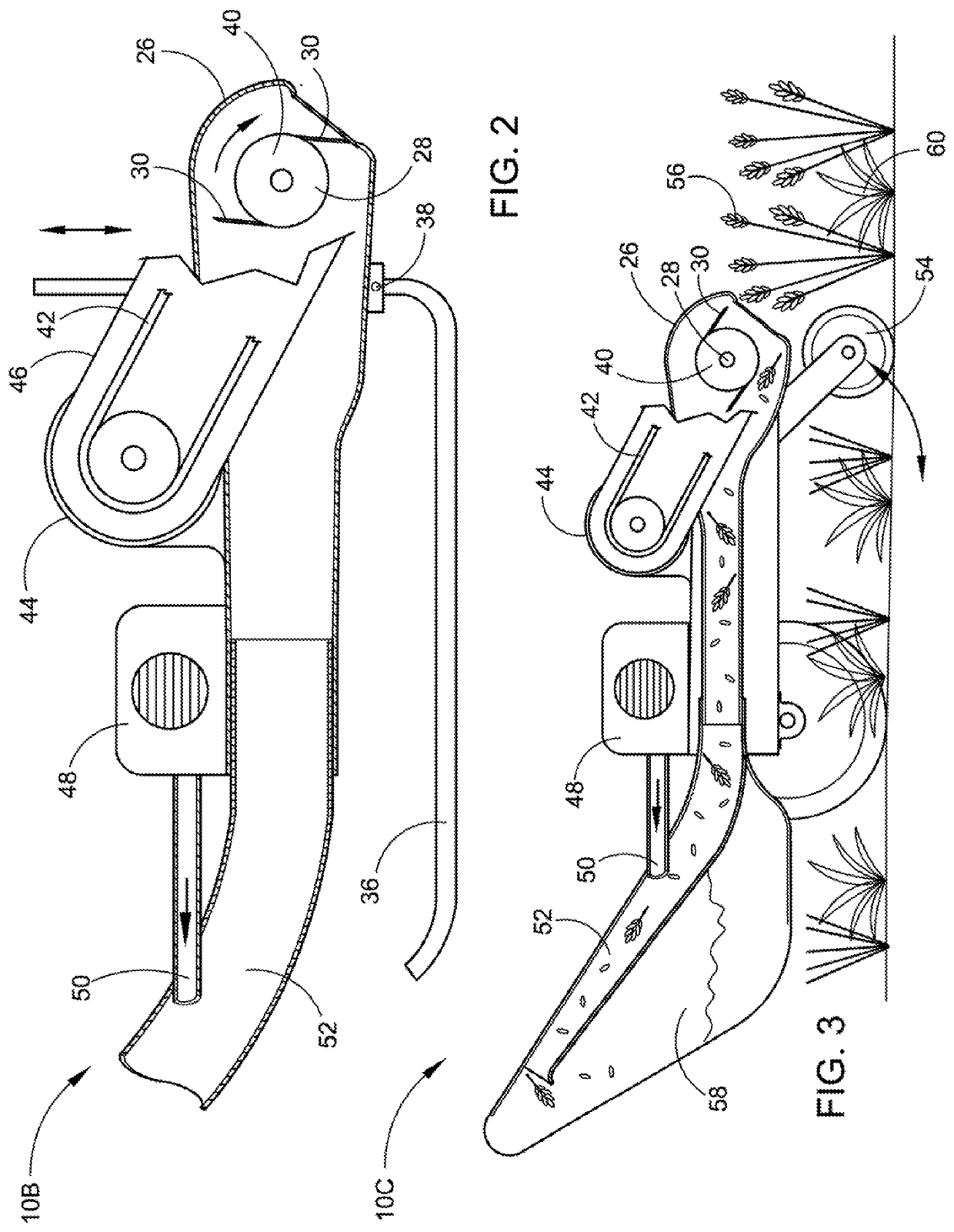Invasive weed seed removal system
a technology of weed seed removal and weed killer, which is applied in the field of invasive weed seed removal system, can solve the problems of increasing the challenge of stopping the spread of invasive plants, affecting the environment and economy, and affecting the restoration of pre-invasion conditions, so as to avoid unwanted species
- Summary
- Abstract
- Description
- Claims
- Application Information
AI Technical Summary
Benefits of technology
Problems solved by technology
Method used
Image
Examples
Embodiment Construction
[0071]Referring now to the drawings, wherein similar parts of the Invasive Weed Seed Removal System 10A, 10B, 10C, 10D and 10E are identified by like reference numerals.
[0072]FIG. 1 depicts a person 12 standing with the preferred embodiment of the invasive Weed Seed Removal System 10A consisting of a backpack unit 14 containing a gas-powered vacuum 16 with an additional drive connection 18 to a flexible drive cable 20 and a flexible vacuum hose 22 connected to a rigid pipe section 24 attached to the cutter and vacuum nozzle 26 with the cutting blades 30. Inside the backpack is a removable debris container 32 for the material sucked up by the gas-powered vacuum 16.
[0073]FIG. 2 depicts a cross section of the first alternate embodiment of the Invasive Weed Seed Removal System 10B with the height adjustable rotatable skids 36 having the height adjustment clamping unit 38. The height adjustable skids 36 can be made from a strong plastic or metal with a plastic coating to keep them from c...
PUM
 Login to View More
Login to View More Abstract
Description
Claims
Application Information
 Login to View More
Login to View More - R&D
- Intellectual Property
- Life Sciences
- Materials
- Tech Scout
- Unparalleled Data Quality
- Higher Quality Content
- 60% Fewer Hallucinations
Browse by: Latest US Patents, China's latest patents, Technical Efficacy Thesaurus, Application Domain, Technology Topic, Popular Technical Reports.
© 2025 PatSnap. All rights reserved.Legal|Privacy policy|Modern Slavery Act Transparency Statement|Sitemap|About US| Contact US: help@patsnap.com



